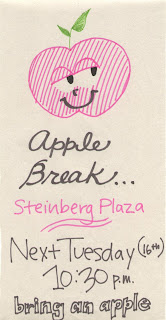It's really exciting to hear him speak, because he's this old guy with a funny voice (funny in a good way) that talks non-stop for an hour and a half about building housing and financing them so that it becomes a successful, mixed-income housing development in the most blighted areas of the country. He has pretty awesome jokes and anecdotes as well.
Some things he deems important are:
- forest people, not tree people (collaboration and diversity in thinking is key)
- that it's easy(ier) to start something up because everyone's excited; you have to have your finances figured out before you start so it doesn't crash right after the first year
- that people can live in the same community because they have the same values, not incomes
- building for people means you gotta be able to listen to them
Yay!













































